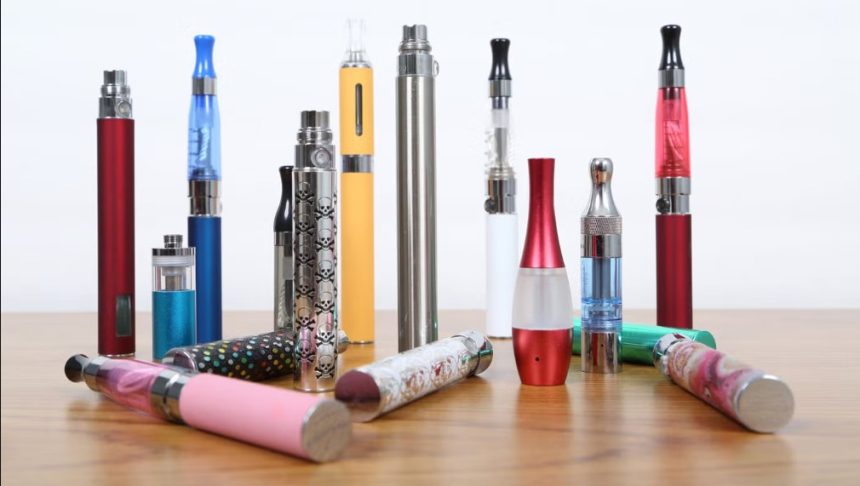By Robert Egbe
Despite the millions of people its products kill every year, and the thousands more whose health is destroyed, the tobacco industry is aggressively lobbying governments and the public to embrace newer kinds of harmful tobacco products that it presents as “less harmful” or “safer” than traditional tobacco use.
According to the World Health Organisation, the industry is particularly bent on luring young people to use its so-called “smokeless” nicotine-filled tobacco products, so that it can create a new generation of addicts. The industry regards these novel products as its future, meaning it quietly hopes that these youth will replace those who die or whose health is destroyed from traditional tobacco use so that the industry can continue making huge profits at the expense of peoples’ lives.
Confronted with clear evidence of the deadly harm of tobacco use, the tobacco industry now claims that it wants people to stop smoking. However, it has refused to stop manufacturing cigarettes or other tobacco products – it makes over five trillion cigarettes every year. Rather, it is actively and hypocritically expanding its production in, and especially, lower-income countries. In Africa, for instance, it is primarily targeting the huge youth populations in countries like Nigeria, Egypt, and South Africa, among others, which it sees as untapped market potential for its products of death and disease. According to the WHO, between 2005 and 2020, tobacco leaf production decreased globally by 4.6 per cent, but in Africa – egged on by the tobacco industry – it increased by 35.7 per cent. The industry knows that many countries on the continent are wracked by political instability, social inequality, and a weak legislative environment, and it is exploiting this to produce and market its products with limited restrictions.
One of its tactics to hoodwink governments and regulators and ensnare new users to tobacco use – in whatever form – is to introduce fancy novel tobacco products. These alternative nicotine products include vapes, also known as electronic cigarettes (e-cigarettes) and other electronic nicotine delivery systems (ENDS), heated tobacco products (HTPs), snus, and oral nicotine pouches, among others. Of course, its claims that these novel products are “safer” are untrue: traditional tobacco products were never safe in the first place. More importantly, tobacco use is harmful in all forms, and there is no safe level of exposure to tobacco. Not even farmers who grow the tobacco plant are safe.
These novel products are part of what the industry calls its Tobacco Harm Reduction (THR) strategies. This discredited tactic has its roots in the United States of America of the 1940s, and it has now been repackaged to impress unsuspecting, contemporary audiences across the world. For instance, almost 70 years ago, the industry introduced filtered cigarettes as part of its THR, falsely claiming that they were, yes, “safer” than other types of tobacco. However, the mass migration of tobacco users to filtered cigarettes did not prevent a rise in lung cancer. Another failed THR strategy introduced by the industry in more recent years is the “reduced carcinogen” cigarettes and products which heated rather than burned tobacco, delivering a vapour into smokers’ lungs. Contrary to the industry’s claims, researchers found that these products were neither safe nor reduced user harm.
Vapes, HTPs, snus, oral nicotine pouches, etc, are the latest kids on the tobacco harm-reduction block, which the industry claims will help people who are unwilling or unable to quit smoking. What the industry is often silent on is that these products contain nicotine, a highly addictive substance from tobacco that can be as addictive as cocaine and heroin. Nicotine exposure during adolescence can harm the developing brain.
According to the European Respiratory Society (ERS), evidence is increasing that novel tobacco and nicotine products constitute gateways to nicotine addiction and the initiation of smoking among youth. A May 2024 ERS report referenced a recent review of 189 studies on vaping and e-cigarettes which concluded that non-smoking youths who use e-cigarettes have substantially higher likelihood of starting smoking.
Furthermore, and contrary to what the industry says, there are no safe nicotine products. For instance, Snus contains several harmful substances, including heavy metals, polyaromatic hydrocarbons, tobacco-specific nitrosamines and tobacco alkaloids, such as nicotine which can damage the cardiovascular system. A June 2023 study by the Norwegian Institute of Public Health showed that the risk of throat and pancreatic cancer was three and two times greater, respectively, among frequent snus users. Furthermore, snus use has a detrimental impact on oral health and is statistically significantly associated with gum bleeding.
Vapes and other e-cigarettes are battery-powered and deliver nicotine through a liquid which turns into an aerosol. The e-liquids come in fruit flavours that appeal to youth. Cartridge-based and disposable e-cigarettes contain nicotine salts that do not produce vapour or visible emissions when the device is used and may make the product even more addictive. They almost always contain harmful ingredients, including nicotine. Acrolein, a known ingredient of many e-cigarettes, causes irreversible lung damage. No e-cigarette has been considered safe and effective by the United States Food and Drug Administration (FDA) in helping smokers quit.
These and more are why public health officials and tobacco control advocates have urged the government not to fall for the current phase of the tobacco harm reduction trick, which, is designed to keep the tobacco industry in its deadly business.
In Nigeria alone, tobacco use claims about 26,000 lives and inflicts debilitating conditions and non-communicable diseases (NCDs) like cancer, heart disease, and chronic respiratory diseases on thousands more. The solution to this man-made crisis is not THR, and it is certainly neither legalising nor making these deadly novel tobacco products available to the Nigerian public.
Rather several evidence-based methods have been scientifically proven safe and effective for quitting smoking. These include:
Counselling – Behavioural counselling by certified tobacco control and other medical experts increases the chances of quitting smoking successfully.
Medications – Several countries have approved some medications shown to be effective in helping people quit smoking. These medications include five forms of nicotine replacement therapy and two non-nicotine medications.
Combination of counselling and medication – Although counselling and medication are each proven treatments alone, using them in combination can more than double the chances of quitting smoking.
In addition, some popular policies to reduce tobacco use include Increasing tobacco taxes, adding graphic warning signs to tobacco product packaging, banning tobacco product advertisements, passing laws to discourage young people, and using peer-based approaches to help people quit tobacco.
Furthermore, Nigeria should emulate countries like Côte d’Ivoire, whose cabinet has just approved a decree that extends the country’s smoking ban to all forms of novel and emerging products. This will shield non-smokers from second-hand and third-hand smoke, which are proven causes of NCDs.
In summary, the government should reject the tobacco industry’s deadly THR claims because smokers who switch to these alternative products are still exposed to toxic and carcinogenic substances that can kill them or damage their health.
Egbe is a tobacco control advocate at Corporate Accountability and Public Participation Africa (CAPPA).











